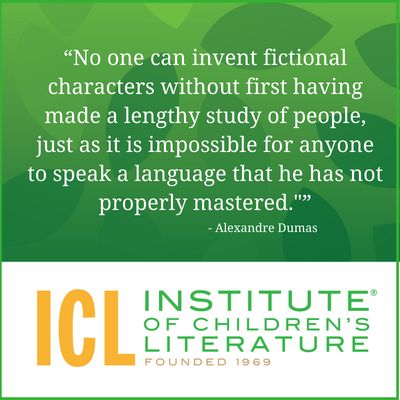
5 Ways Writers Can Prep for 2025 Goal Setting
Before we roll on to the new writing year, let’s harness our optimism for the blank slate before us and prepare for our 2025 Goal Setting just for writers.

We teach our students how to write and get published!
View our Course Catalog >
By nature, writers are collectors. These collections we store are a fantastic jumping-off point for character creation. Honestly, even in the midst of the most unpleasant circumstances, I tend to be alert to details that I might use if I ever put a character in the same situation. If I visit a friend in the hospital, I notice as many details as possible of what the inside of the building is like: the array of strange technologies often left pushed to one side, the cubbyholes that function as waiting rooms, the quality of the coffee in the cafeteria.
Storing these details makes it easier to write scenes that feel real as if the reader is stepping into an actual world. And just as we make note of setting details, we also notice details of people. In fact, breaking pieces off the people you see and hear and know is one of the most fun parts of writing.
Because of this, writers are people watchers. As author Cassandra Clare says, “Creating characters is like throwing together ingredients for a recipe. I take characteristics I like and dislike in real people I know, or know of, and use them to embellish and define characters.”
When I hear of something interesting a child has said or thought, I tend to make a note of it. When I hear adults with interesting quirks, I note those as well. You never know when these bits can come together for interesting character creation.

Obviously, this particular inspiration was readily available as she was family, but you can find inspiration further afield as well. Keep records of interesting people you come across whom you can borrow traits from when the need arises.
Surprisingly, the process of seeing every person as a possible fuel for character creation can also be helpful when dealing with difficult people in real life. Sure, they’re making your day hard right now, but later this same encounter can help you build the perfect antagonist. Keeping that in mind can make you look deeper into people even as you’re dealing with them, and that can reap surprising rewards right in the interaction. (It doesn’t make the interactions easier, but I find it does help me keep enough distance to avoid getting too caught up.)
One reason for taking only some traits from any given real person is to avoid the trap of having the resulting character refuse to do the jobs necessary for the story because you know “so-and-so wouldn’t do that.” For example, though the character I created that was inspired by my aunt reminded me of her frequently, she wasn’t a copy of the human. She was still an amalgam of bits and bobs from a collection of sources, even though my aunt offered the most source material. Because she wasn’t a carbon copy of my aunt, I wasn’t plagued by thoughts that my aunt wouldn’t do or say this or that. Instead, I had a character who was more willing to fit the plot because her creation only borrowed those traits that would help her fit the plot.
Also, because she was mixed with other characters, she would not have been recognizable by my aunt as inspired by her. The character had some of my aunt’s traits, but she also had her own pet phrases, her own quirks, fears, and needs. Some of these were very different from my aunt. This can be hugely helpful since many people are not amused when they turn up in your books. People have been sued when a fictional depiction was a little too close to the source material. Sure, lawsuits are rarely successful, but none of us wants to be sued.
Finally, any character you base on someone in real life must have other things mixed in because we simply don’t know another person as fully as we need to know our characters. In real life, we base our knowledge of someone on the actions we’ve witnessed or heard about, the things we’ve heard the person say, and the mannerisms we’ve seen. But we can’t know what is really going on in the head of real humans. As authors, we must know what is going on in the heads of our created humans, so we have to go further and add ingredients we could not possibly have based on real people we know. Otherwise, our characters will come out too flat because we don’t really know their inner workings and motivations.
One of the best things writers can do is notice the people around them. I’m much better at gathering scraps from settings and situations than I am from people, so I have to make a specific effort to notice the people around me. If you’re not a natural people watcher, consider putting yourself in a good people-watching situation and make a single note from every person you see. For example, suppose you choose the public library on a Saturday. You will see a variety of people, especially if you choose a larger library in the biggest city close by. Libraries are wonderful for people-watching as they often have comfy chairs that seem perfect for the process.
Try this character creation exercise. Carry a notebook to the chair and make a one or two-sentence note about every person. The older woman who dresses well walks stiffly. Why might that be true? Is she in pain or is it a personality quirk? The child who bounces whenever he’s asked to be still offers a fun, kinetic trait you might use someday. The next child who walks as if lead weights are tied to his shoes, dripping with displeasure at being there. Why would he feel that way? The man who walks around the mom with a child, giving them a wide berth. Is he afraid of germs? Write at least one sentence about every person. If you overhear scraps of conversation, note that. Eavesdropping can give you a sense of how differences in word choice affect tone and suggest a unique voice.
At your next writing session, imagine each of the people you wrote a note about in a totally different situation. Imagine them at home, for instance. Write an entire paragraph about this person. For this exercise, avoid writing in first person stream of consciousness as that format too rarely nets anything good. Instead, set the person to a task. Consider this:
The boy races ahead of his mom, the slow trudging footsteps in the library now barely a memory. He hits the front door at speed, trying to turn the knob and get inside without slowing down. It doesn’t work and he bounces off and must try again. Once inside, he races to the computer to fire up the game he has been thinking about all morning. His mom calls his name, but he doesn’t even turn around. If he’s deep in the game by the time she gets in, she’ll leave him alone. At least, he hopes so.
In this, I’ve taken the single thing I noticed about the child (that he didn’t want to be at the library) and given it a reason, and then let it play out for a paragraph. I could spend longer, of course, and think about why the game is so important to him or how that might work in a larger plot. But for the sake of the exercise, I’ve taken a tiny glimpse of a person and made them a character (or at least started the process). People-watching can produce all kinds of interesting results and it is well worth the effort. In fact, these kinds of single-paragraph musings have grown into full stories sometimes.
As you start building your characters, think about the kinds of source materials that can provide those interesting tidbits to make your characters more engaging, compelling, and real. Details make the character.
Begin mining for good character details and your writing will reap the rewards.
With over 100 books in publication, Jan Fields writes both chapter books for children and mystery novels for adults. She’s also known for a variety of experiences teaching writing, from one session SCBWI events to lengthier Highlights Foundation workshops to these blog posts for the Institute of Children’s Literature. As a former ICL instructor, Jan enjoys equipping writers for success in whatever way she can.

Before we roll on to the new writing year, let’s harness our optimism for the blank slate before us and prepare for our 2025 Goal Setting just for writers.

Writers can be thin-skinned when it comes to getting feedback on their work. Let’s look at 4 ways to positively deal with constructive criticism!

Rejection is part of the territory when it comes to being a writer. Today we offer reflection for writers to help redirect your efforts after a rejection.
1000 N. West Street #1200, Wilmington, DE 19801
© 2024 Direct Learning Systems, Inc. All rights reserved.
1000 N. West Street #1200, Wilmington, DE 19801
© 2024 Direct Learning Systems, Inc. All rights reserved.
1000 N. West Street #1200, Wilmington, DE 19801
© 2024 Direct Learning Systems, Inc. All rights reserved.
1000 N. West Street #1200, Wilmington, DE 19801
© 2024 Direct Learning Systems, Inc. All rights reserved.

1000 N. West Street #1200, Wilmington, DE 19801
© 2025 Direct Learning Systems, Inc. All rights reserved.

1000 N. West Street #1200, Wilmington, DE 19801
©2025 Direct Learning Systems, Inc. All rights reserved. Privacy Policy.
3 Comments